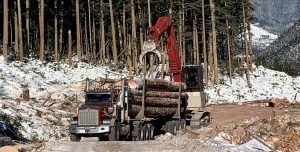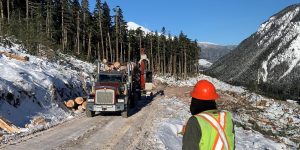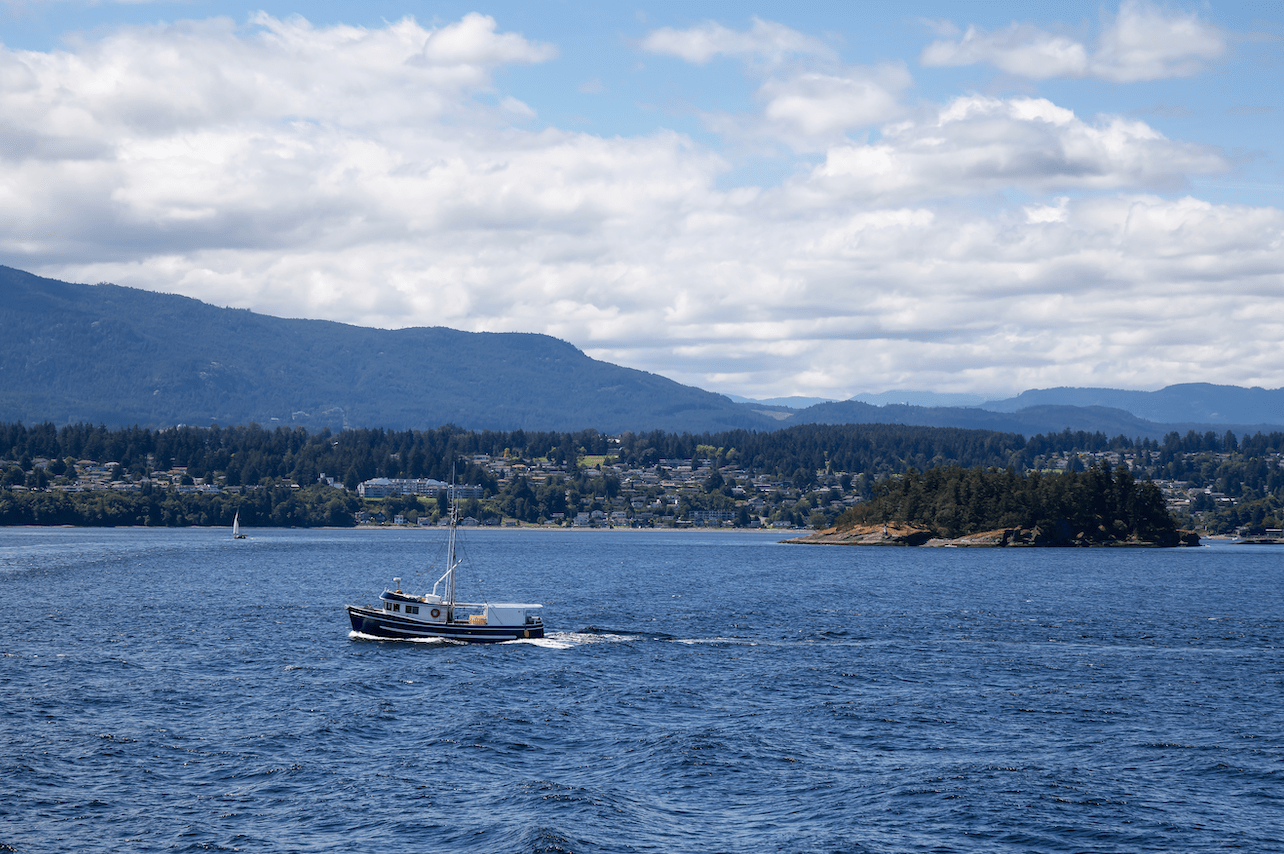
Loading of pulp logs normally burnt headed to coastal pulp mill
TERRACE —The forest industry in BC’s northwest is working together to use more waste wood from logging operations and reduce greenhouse gas emissions.
The initiative is being facilitated by nearly $540,000 in funding from the Forest Enhancement Society of BC (FESBC) and managed by Westland Resources Ltd. The avoidance of pile burning waste wood results in fewer greenhouse gas emissions and contributes to the achievement of BC’s and Canada’s climate change targets. The funding was part of the provincial government’s StrongerBC for Everyone: BC’s Economic Recovery Plan.
“We are grateful to FESBC and the provincial government for the funding for our Coast Mountains fibre utilization project,” said Brittany Dewar, FIT, Westland Resources. “We are proud to work with forest licensees and FESBC on projects that provide economic, social, and environmental benefits to our communities.”
The project moved over 19,000 cubic metres – about 475 truckloads – of uneconomic low-quality logs from three forest harvesting licences held in the Terrace area including two held by First Nation companies Kitselas Forestry Limited Partnership (KFLP) and Kalum Ventures Ltd (KVL), and one by Skeena Sawmills last winter. The fibre was chipped at Skeena Sawmill’s whole-log chipper in Terrace and the fibre was then shipped to Harmac Pacific’s pulp mill near Nanaimo. It is anticipated that an additional 600 truckloads of normally uneconomic fibre will be utilized this summer and fall by KFLP and/or KVL.

Logs from southeast of Terrace destined to coastal pulp mill
If not for the initiative, the low-quality wood fibre would have been left in slash piles to be burned as the purchase price for the pulp-quality fibre at the time in these areas was less than the cost of delivering it to the coastal pulp mills. Oftentimes, Canadian pulp is used to make many products including cloth (rayon), toothpaste, ice cream, nail polish, makeup, disinfecting wipes, medications (as an inert carrier for the medicine), paint, ping pong balls, and LCD screens. With funds from FESBC, the fibre was utilized and reduced the potential for greenhouse gas emissions because the fibre was not burned—resulting in a project that made good environmental sense.
“Many of the forests in the Terrace area contain up to 50 per cent low-quality fibre which is difficult to use economically,” said Gord Pratt, RPF, Operations Manager, FESBC. “We were very supportive of providing funding which allows for the coastal pulp mills to use of this lower-quality fibre and increase the forest sector jobs in the Terrace area.”
This project supported the Province’s StrongerBC$1.5-billion economic recovery plan to support the Province’s goal to provide economic benefits for all British Columbians, and specifically to support economic recovery post-pandemic by funding fibre utilization and stand rehabilitation projects. The project will result in increased utilization of post-harvest residual fibre and conversion of low value uneconomic stands to future forests while creating jobs in the forest sector.

